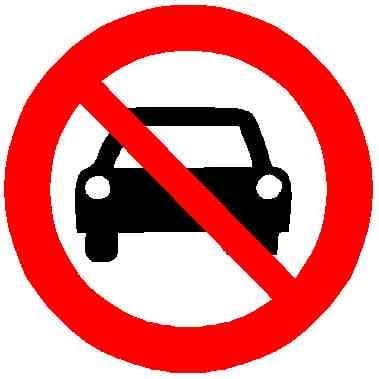- cross-posted to:
- [email protected]
- cross-posted to:
- [email protected]
cross-posted from: https://lemmy.world/post/28348030
I’m actually jealous of Bob. He has a wife that he loves, 3 kids that he loves, a rival across the street that easy to hate, because he went to the Jan 6th riot, another rival in the food inspector who’s just mad at him because Bob stole his girl. He owns his own business doing what he loves, and has 2 close friends that visit him near daily.
Sure his finances aren’t the best, and his resteraunt is struggling, but he’s living his dream!
On top of that, he has sworn allegience from a biker gang. Plus Marshmellow loves him, and Marshmellow is awesome!
It’s a little worrying that he has full delusional conversations with food and cooking tools though. That may be something he should see a therapist about. But hey, nobodys perfect.
No more Chad, is now Bob.
You forgot one of the most important things, he loves his job and wouldn’t change it for the world.
P.S. Is anybody else disappointed by the new Marshmallow voice actress?
He owns his own business doing what he loves,
No I didn’t.
And yes, I am disappointed, but I always am with roles that get replaced.
Sorry, my bad :p
also, he only has to spend like 30 seconds a day commuting to work.
I never even thought of that.
Lots of shops like that in the Europes…
Plenty in the US, too — I’m in San Francisco and there are tons of mixed use buildings, in both “sharp” and well-off neighborhoods alike.
Like yes, zoning is used for a whole bunch of bullshit, but the second you get anywhere even remotely urban this is extremely common. This sounds like it’s from someone who grew up in suburbia hell and really just wants to move into a city but doesn’t know that.
A big part of the problem is in North America, they won’t build that type of development anymore. New developments are almost exclusively either residential SFH or commercial strip malls. Prevously a building was flexible enough to go from a grocer with apartments above it then to a financial office then to full residential with relatively minor renovations in between. Now walmart has rules saying another big box store cant buy their abandoned big box store to prevent competition.
When I was a kid, my parents bought a house/restaurant combination place that served fish and chips. It was frigging weird.
This is how I felt about all the one way streets in downtowns. Always hated them personally but assumed someone somewhere must have had a good reason behind it that I didn’t know.
But no… they’re just awful in basically every way.
This doesn’t make sense to me; of all places, downtowns in cities are where one ways should exist. How would adding traffic in the other direction, wider roads, and more complex intersections benefit downtown?
This is a misunderstanding of the issue. We aren’t talking about changing the road width here at all, just the lane number and direction. Most of these old, downtown streets were always narrow two-way roads. The difference is that oncoming traffic in the road and having only one lane in each direction dramatically lowers vehicle speeds, meaning these one ways are hugely more dangerous than the two way streets they replaced. In my city (which actually invented the downtown one-way!), 100% of pedestrians killed in the downtown area in recent years were killed on these one way streets. Yes, every single one.
To explain the history in more detail, when the field of traffic engineering emerged and it was decided that rate of personal vehicle flow was to be the sole design criteria for all roads in the US, narrow two way streets presented a problem. They couldn’t be widened due to adjacent development, and they were frequently congested and did not allow high speeds because of the close proximity of oncoming traffic. It was theorized that by converting them to multi-lane one ways, higher traffic flow would be accomplished.
As with other schemes to pack more vehicle throughput into urban areas, this seemed to work for a short period. It was deemed highly beneficial to the emerging political elites who had largely moved to the suburbs but worked in downtowns. Poor, minority, and other downtown residents who could no longer use or even safely cross the street on foot were deemed unimportant. Or more cynically, this danger and discomfort to the undesirables was another added benefit that might encourage them to leave the highly profitable business districts being built in their neighborhoods.
Before long, the new infrastructure for commuters enticed more and more suburban development and virtually everyone who could afford it moved out of downtown, and with this, traffic congestion increased dramatically. This is where the benefits of increased traffic flow disappear—adding more lanes in tight city streets where there are many intersections doesn’t really speed up traffic much at all when you reach even moderate traffic density due to all of the turning and lane-crossing required to navigate. Actually, this slows traffic and makes downtown streets safer during rush hour, but unfortunately they’re still extremely deadly at off hours, especially at night when fewer cars are on the road and visibility is poor.
In short, one way roads are dangerous and don’t really benefit anyone. In my city even local businesses have been agitating to get rid of them because they make it very difficult to pull over or cross the street to shop or eat. Eliminating them is a great and easy way to make city streets much safer and more pleasant without spending a lot of money or inconveniencing anyone.
Awesome reply, thanks for elaborating. That all makes a lot of sense.
One way streets have another function - it’s to help direct traffic. Properly used, it allows you to have minimum entry and exit points.
The issue with downtowns is that there are too many intersections. If you take a line of like a mile, take out all the cross streets in between, and make it a one way to arterials, you’ll have better results.
But, yes, too many vehicles is also a problem.
I understand the principle but you simply can’t turn a dense city street into a limited access highway. We tried and it does not work, and has huge unintended side effects.
Okay so as much as I don’t fit in because I like cars, it’s not just about making things one way. You also have to replace lanes with public transport. And you have you have walkable pedestrian only areas with multi use zones
The problem is that downtowns by their nature are pedestrian zones. It’s unavoidable. You can’t have a freeway that’s also a pedestrian zone and that’s why so many people are dying. Not to mention what I said above—you would need to eliminate almost all intersections which would make it impossible to get to your destination. Without spatially huge interchanges (impossible to build without demolishing the city you’re trying to bring people to), the intersections that remain would still disrupt traffic flow.
You just can’t have high speed roads in heavily populated areas. It’s not safe and congestion prevents them from functioning as designed. If there is a great need for this then it needs to be underground, but this is usually too expensive to consider.
But yeah those other things are definitely needed in downtown areas.
What’s the reason for one ways I didn’t know it was a thing really?
The reason in theory is to allow multilane roads and higher traffic speeds. In practice this rarely improves things due to the high density of intersections and congestion in city centers. The real effect is just worse pedestrian and cyclist safety, in addition to making navigation much more difficult even for car drivers.
Hear me out. Combo food truck/van life.
That sounds like it would have a 0% chance of being approved by the health department.
I think most old European cities have stores and people living above the store. Houses are way to expensive to not use them, and lots of small stores don’t need 2 stories.
I am passionate about this subject even if I don’t belong in this community.
Zoning is important. It’s what prevents a nuclear power plan next to your house.
The isn’t is that they don’t allow multi-use zoning. There’s very little reason you can’t have commercial below residential.
Zoning is important. It’s what prevents a nuclear power plan next to your house.
When looking at the Netherlands, you can both have a store at a house, AND a nuclear power plant that’s not built right next to a village (it’ll be a small kilometre away, since my country is rather densely populated).
We’ve got a whole area of my Australian suburb dedicated to a bunch of these, all adjacent to a beautiful park and I believe they’re all subsidised by our council if I recall correctly.






